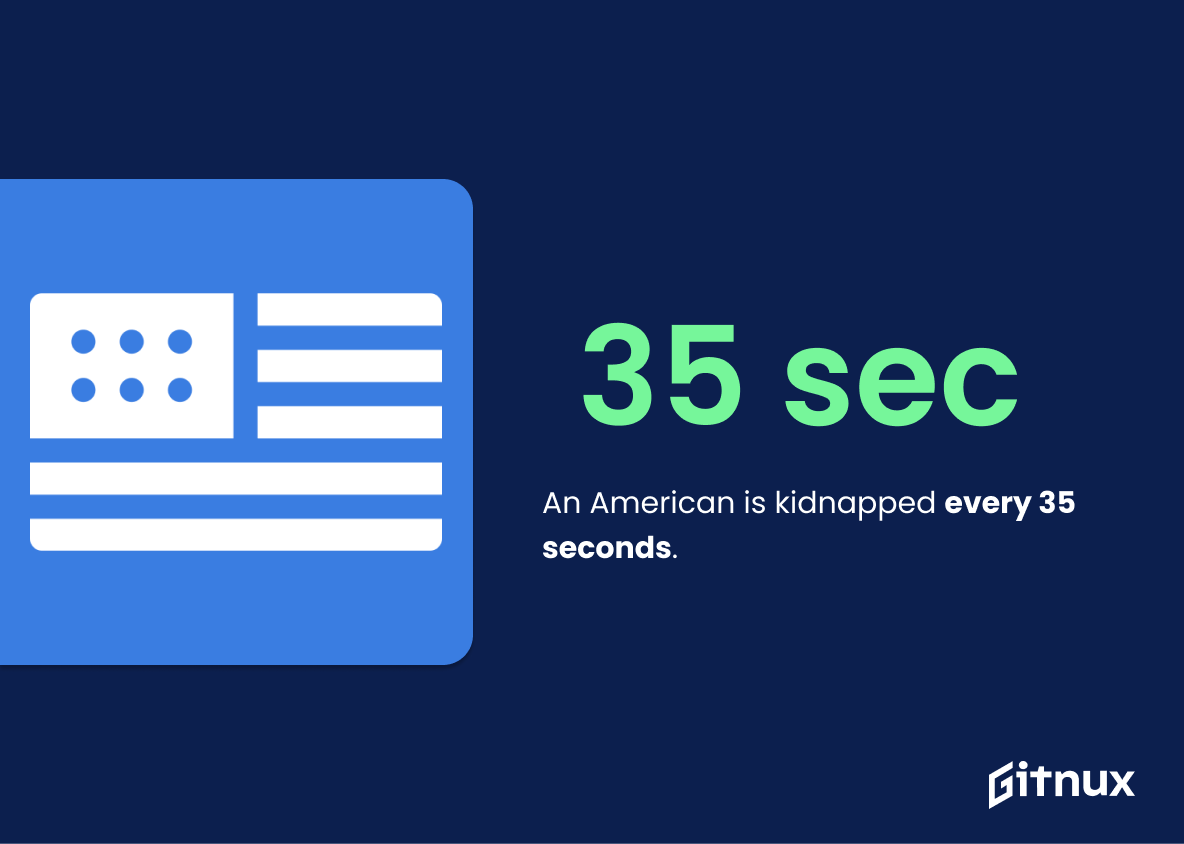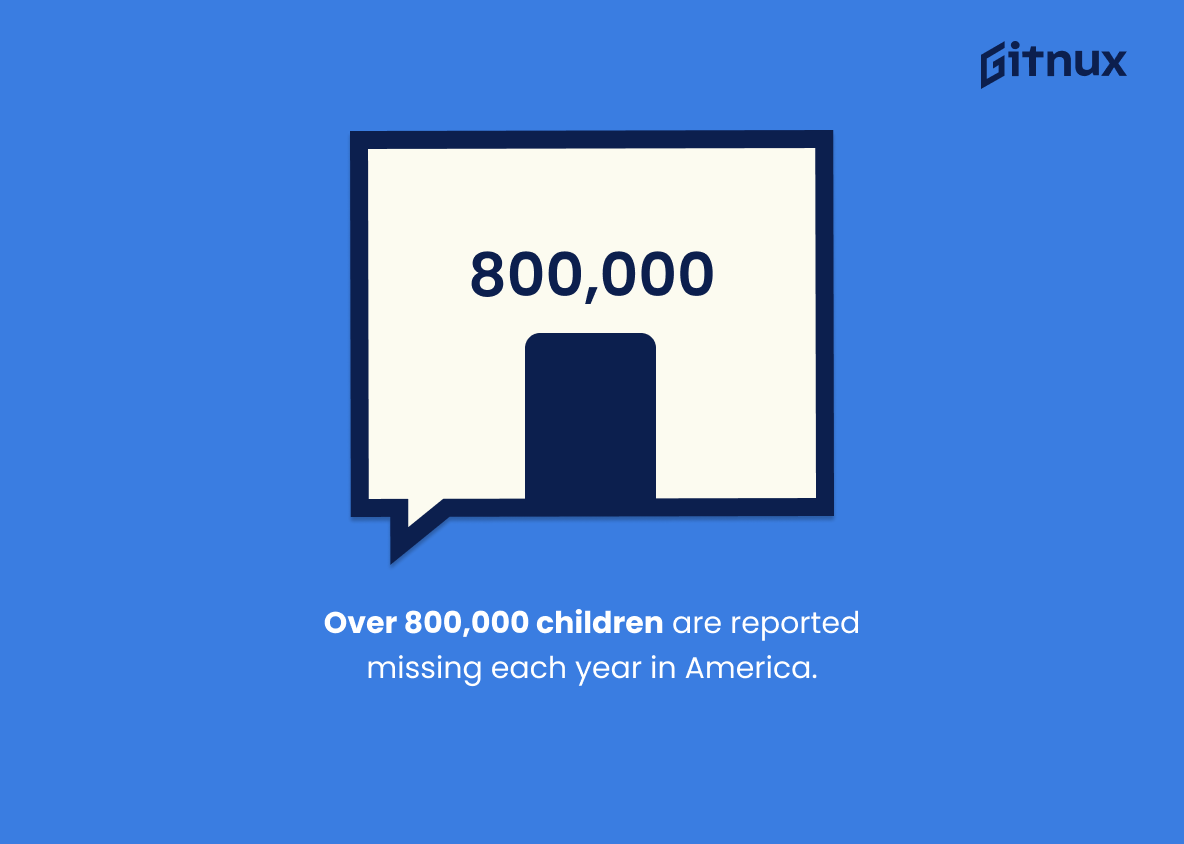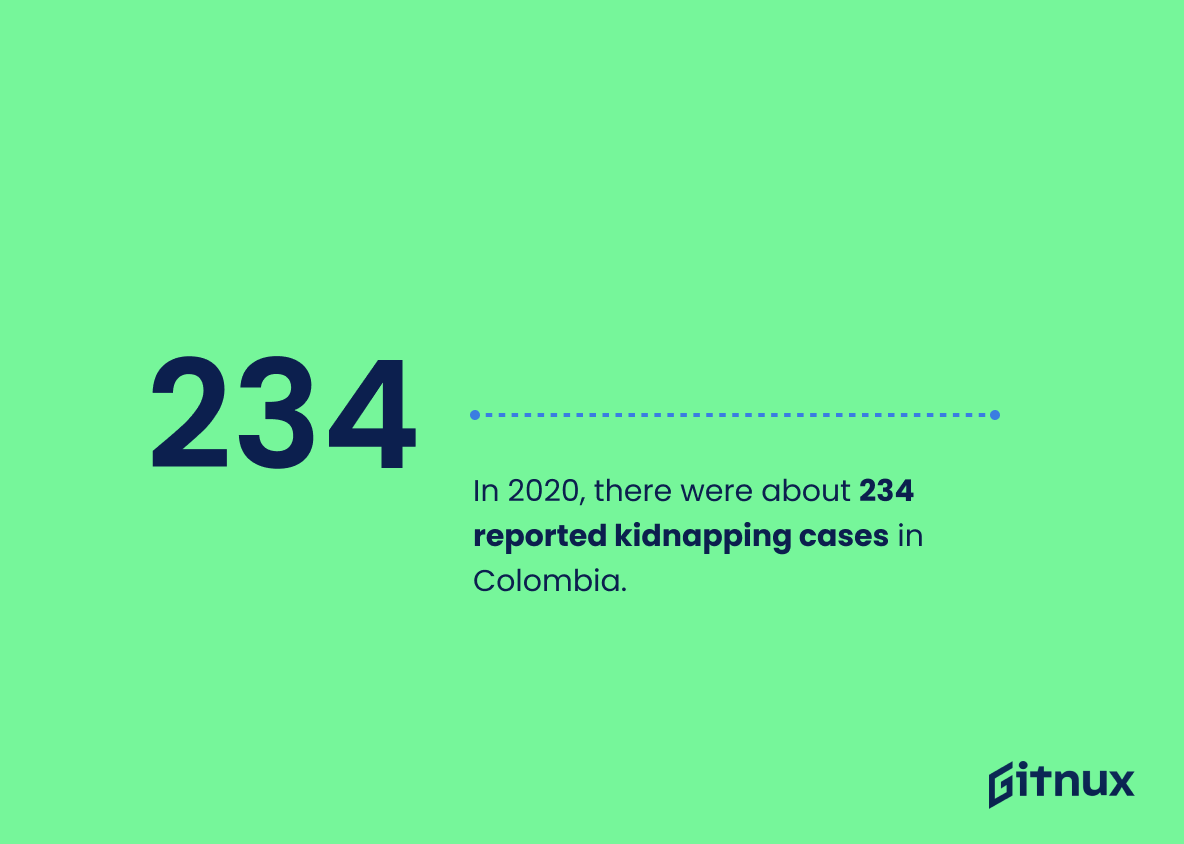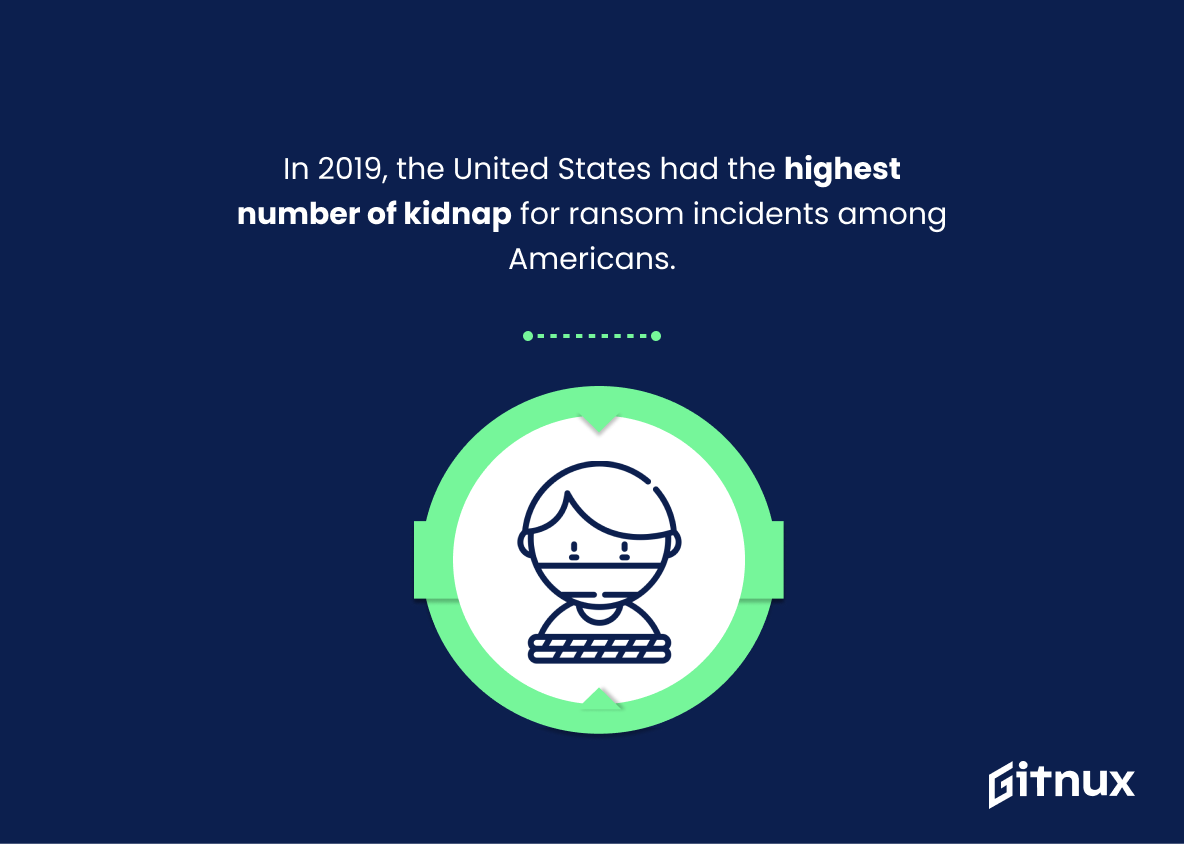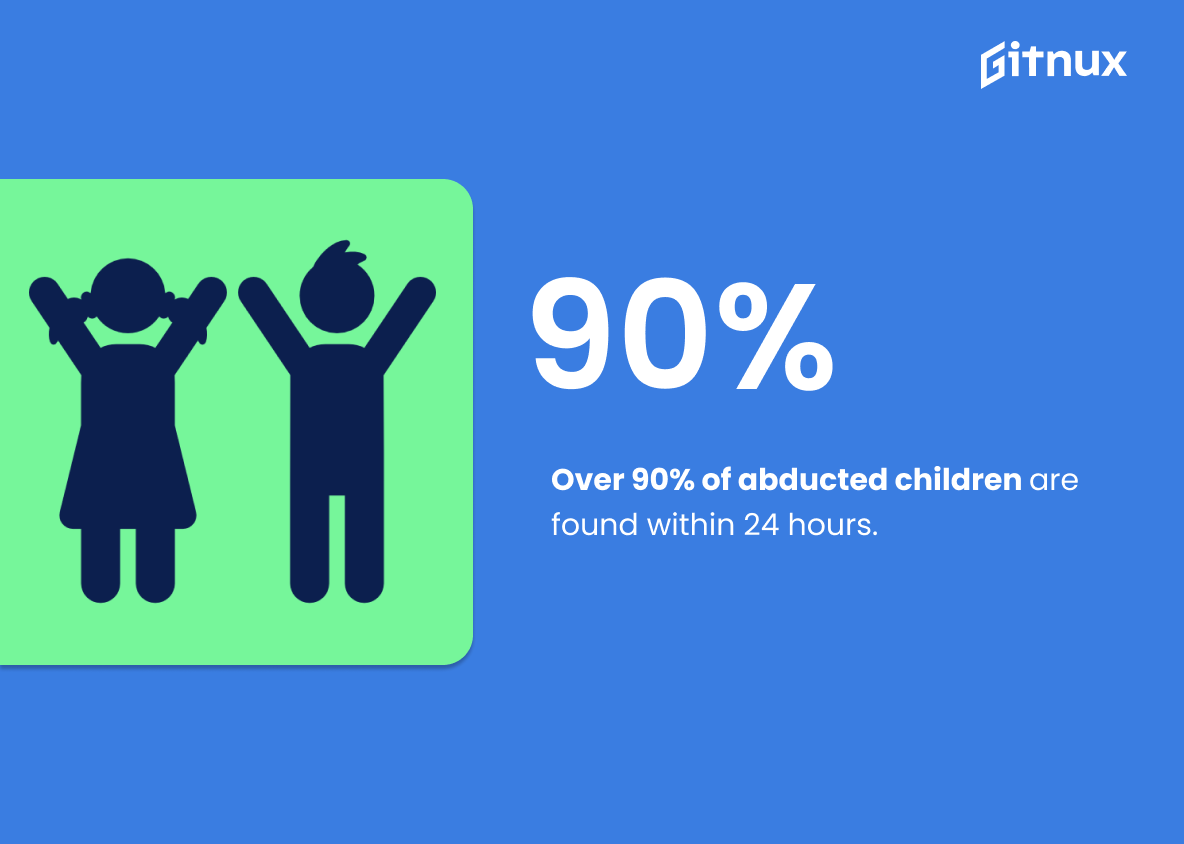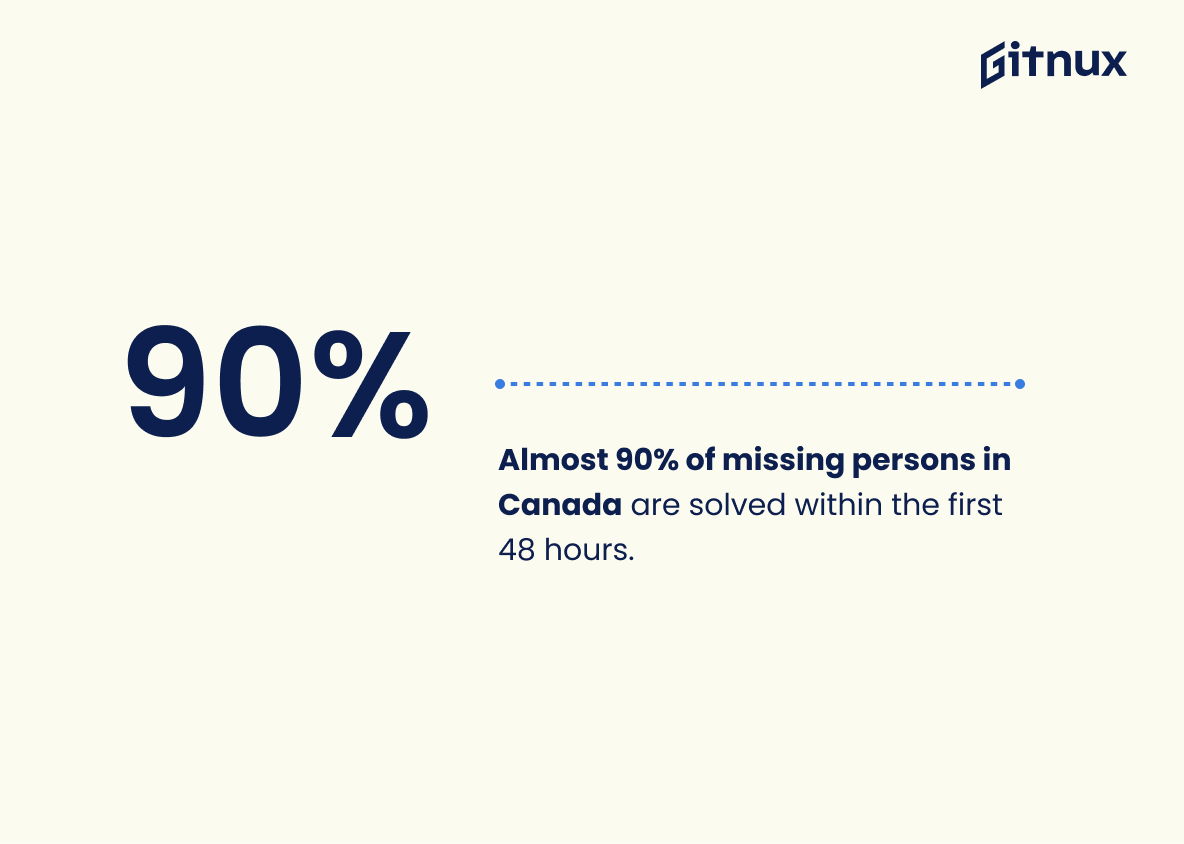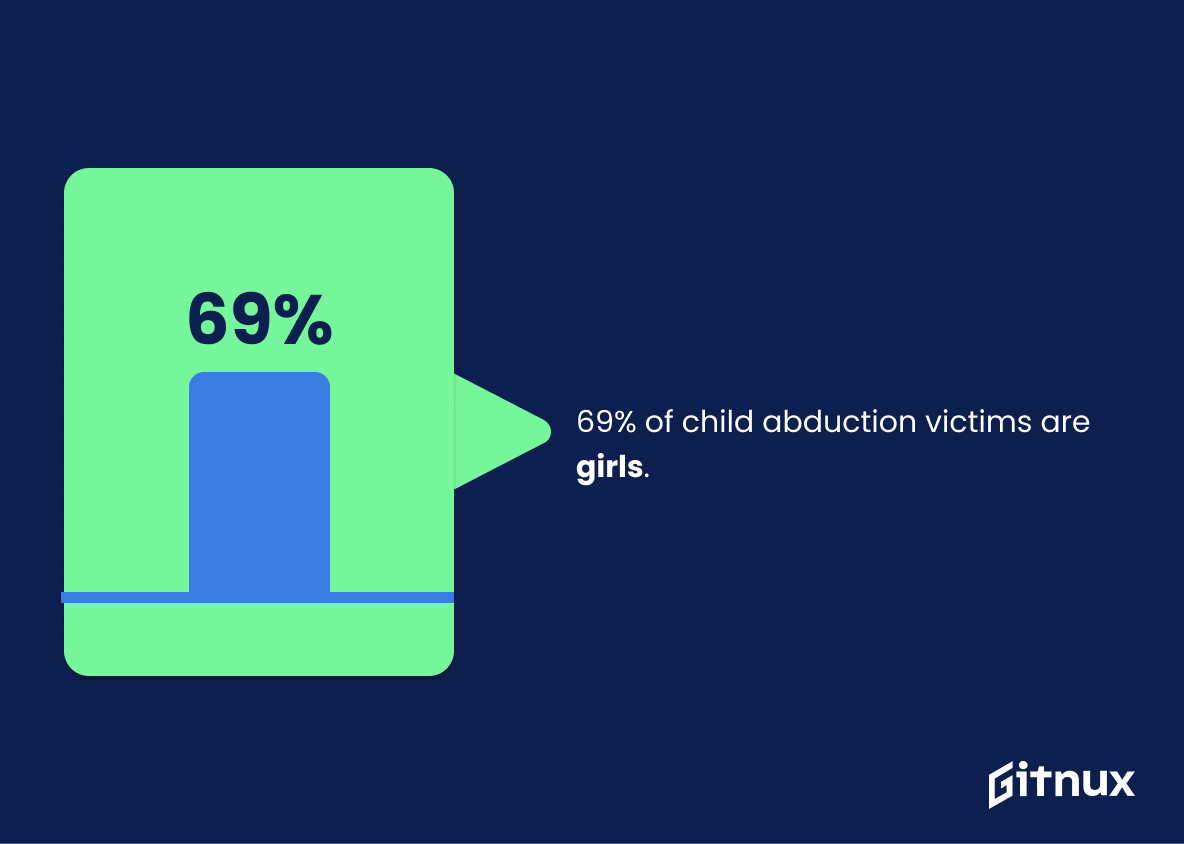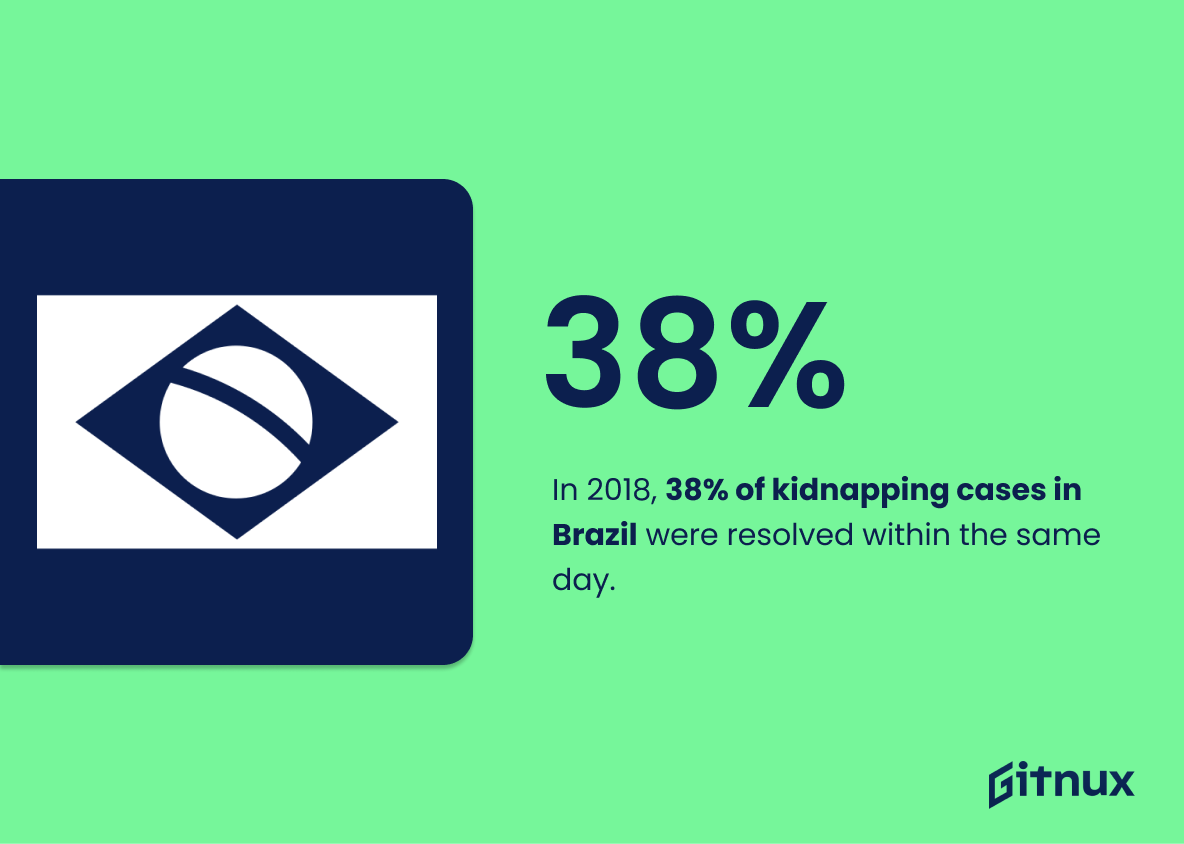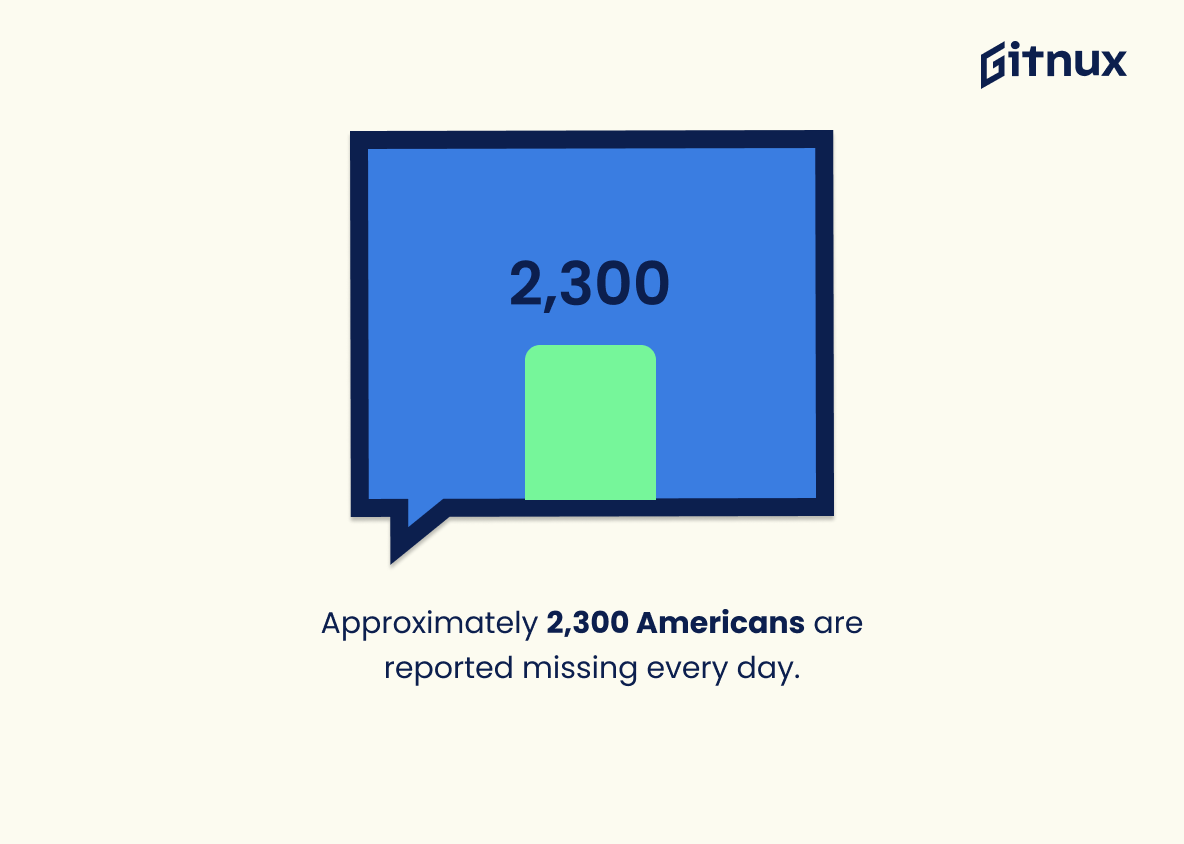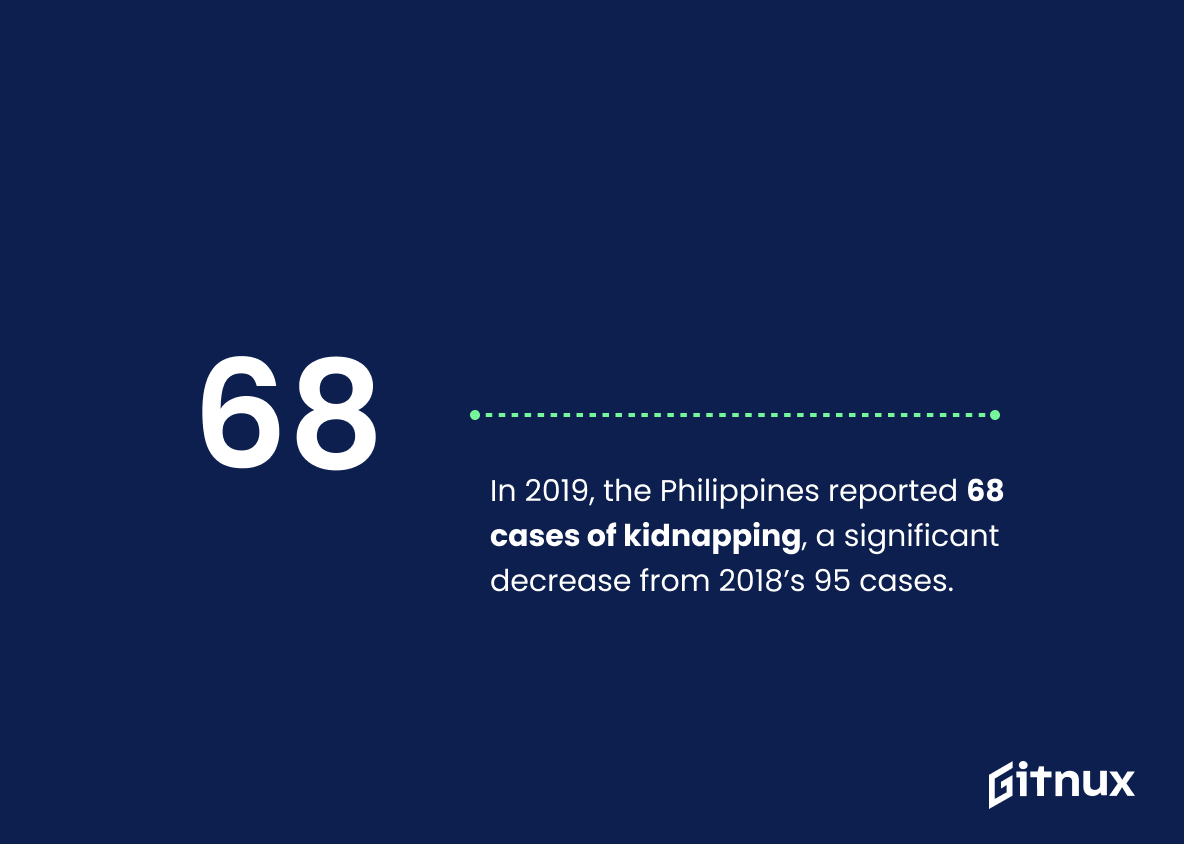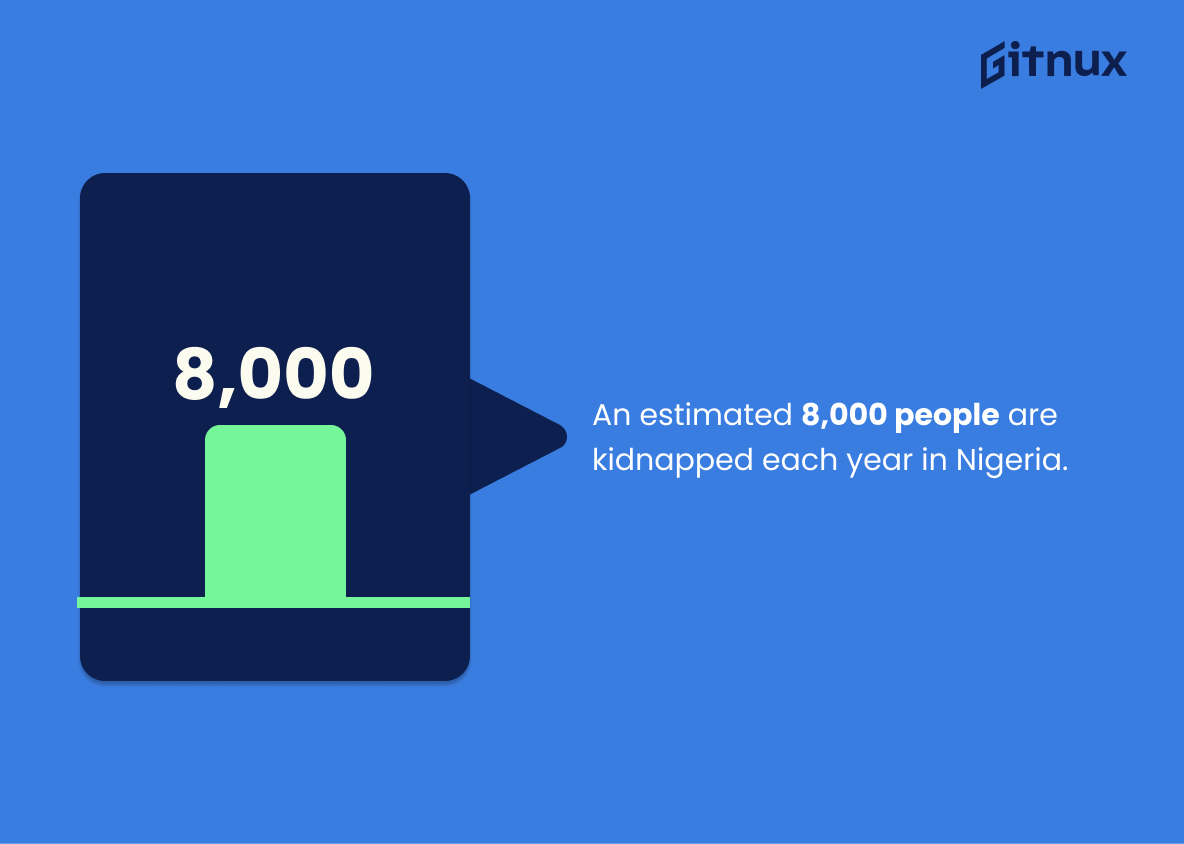In the world of rapidly upgrading technology and increasing connectivity, a dark and sinister aspect continues to lurk in the shadows- kidnapping. This unsettling crime, often shrouded in mystery, fear, and uncertainty, leaves society grappling for answers. Our blog post will shine a light on the grave issue of kidnapping, unraveling the latest statistics that present an alarming reality.
Through this comprehensive and detailed survey of kidnaping statistics, we aim to enhance your understanding and awareness of this crime that persists in corners of our society. Prepare to delve into a sobering examination of numbers, trends, and scenarios that underscore the urgent need for continued vigilance and proactive measures against kidnappings.
The Latest Kidnaping Statistics Unveiled
An American is kidnapped every 35 seconds.
In exploring the unnerving world of kidnapping statistics, one cannot overlook the chilling frequency at which Americans are kidnapped, which is happening virtually every 35 seconds. This unwelcome pulse of anxiety pulsing through society’s veins starkly illustrates the rampant and all-too-real threat that kidnapping presents in America today.
A stark number such as this serves as an urgent call to address security issues looming over our everyday lives. It zooms in on why it’s absolutely pivotal for authorities, organizations, community leaders, and families to step up their efforts in combating these crimes, and reinforces the need for robust, timely, and coordinated action and comprehensive policies. The stat’s gravity compels us to revisit safety measures while simultaneously compelling policymakers to better tackle the menace of kidnapping.
Over 800,000 children are reported missing each year in America.
Drawing attention to the staggering figure of more than 800,000 children reported missing each year in America unlocks a chilling reality. It serves as a stern wake-up call, underlining the urgent and escalating issue of child kidnapping that permeates our society. Integrated within a blog post about Kidnapping Statistics, this formidable number articulates the gravity of the situation.
It amplifies the sense of alarm, invoking fierce urgency to comprehend, address, and reduce this harrowing statistic. This shocking revelation could invoke keen reader interest, strengthen their comprehension of the problem’s scale, and emphatically emphasize the importance of prevention methodologies, proactive safeguarding strategies, and stringent legislative policies.
In 2020, there were about 234 reported kidnapping cases in Colombia.
The vivacity of this statistic, outlining the report of approximately 234 kidnapping cases in Colombia during 2020, breathes a rekindled urgency into our blog post about Kidnapping Statistics. This number not only serves as a stark reminder of the gravity and prevalence of the issue in Columbia, but also brings a sense of immediacy and relevance to the global dialogue about kidnapping.
Further, it unfurls a critical narrative about the potential underlying causes, patterns, and effects linked to kidnap situations, providing readers a quorum for discussing the interconnected societal issues. Thus, this number isn’t simply tucked away in the annals of crime data, but indeed speaks volumes about the enduring struggle against kidnapping in this South American nation.
In India, a child is kidnapped every 10 minutes.
Highlighting a startling statistic such as “a child is kidnapped in India every 10 minutes” paints a vivid picture of the alarming frequency of this crime. It quickly conveys the urgency and gravity of the issue, setting a tone that grabs the reader’s attention.
Furthermore, it grounds the conversation in a tangible reality, transforming faceless data into a powerful narrative that resonates on a deeper level with the reader. This figurative ticking clock underscores the severity of child kidnapping, reinforcing the importance of combating this disturbing trend and exploring potential solutions within the discourse of the blog post.
In 2019, the United States had the highest number of kidnap for ransom incidents among Americans.
Highlighting the statistic – that in 2019, the United States experienced the highest number of kidnap for ransom incidents involving Americans – the gravity of the situation becomes a stark reality. This data offers us a revealing glimpse into the disturbing escalation of this particular crime within our society, emphasizing the urgency for increased safety measures.
It paints a vivid picture of the landscape of criminal activity in America, and acts as a wake-up call for us to understand and combat this deeply concerning issue. While explaining the global dynamics of kidnap for ransom, this statistic brings the narrative close to home, making it an engrossing focal point in a blog post about Kidnapping Statistics.
Over 90% of abducted children are found within 24 hours.
Shedding light on the intensity of the situation, the significant amount of over 90% of abducted children found within 24 hours instils a beacon of hope among readers. It powerfully underlines the effectiveness of swift and robust actions implemented by law enforcement agencies.
Serving as a silver lining in the gloomy cloud of child abduction figures, this statistic reassures readers of the possibility of prompt recoveries, stressing the vital role of immediate action and collaborative community efforts in such emergency situations. Furthermore, it can encourage continuous improvement and strengthening of proactive measures and strategies, aiming towards an even higher percentage in the future, ultimately aiming for a safer world for our children.
In 2019, Mexico held the highest kidnap risk rating globally.
Unveiling the relentless reality with numbers, the study from 2019 places Mexico at the unfortunate pinnacle of global kidnap risk rating. A pivotal point to be explored in the blog post breathing life into Kidnaping Statistics, this alarming statistic paints a glaring portrait of escalating safety concern.
Not only does it unveil the depth of kidnaping crisis in Mexico but also draws paint brush to the contrasting canvas of global kidnap risk landscape. Valuable for analytical comparisons, it furthermore aids readers to develop a clear understanding of the severity of the issue, enabling them to perceive kidnapping in the pertinent global context and avoid tunnel vision.
Almost 90% of missing persons in Canada are solved within the first 48 hours.
Diving deep into the kidnapping statistics, an interesting revelation awaits. Picture a stopwatch, with 48 hours on the clock – a crucial time frame that generates a glimmer of hope. As the hands of the watch make two full circles, the chance of pinpointing a missing person’s location in Canada spikes to nearly 90%.
This nugget of information not only enlightens, but also instills reassurance that a majority of these complex kidnapping cases are swiftly unlocked before the ink on the initial reports even dries. This number is more than a statistic—it’s a beacon proving the effectiveness of swift action paired with efficient investigation procedures. It emphasizes that in the race against time, Canadian initiatives often cross the finish line triumphantly, bringing families back together.
69% of child abduction victims are girls.
Delving into the nuances of kidnapping statistics, the conspicuous data revealing that a whopping 69% of child abduction victims are girls comes forward as a crucial element of analysis. This figure not only punctuates the gravity of the crisis on a global level, but it also puts a magnifying glass on the gender-specific vulnerabilities that exist.
Highlighting such a staggering statistic helps illuminate the patterns and trends in global kidnaping instances. Furthermore, it has the power to coax policymakers, enforcement agencies, child advocates, and the community at large into shaping targeted awareness campaigns, regulations, and safety measures.
Additionally, showcasing this startling truth adds an additional layer of depth to our understanding of the issue. It encourages a more gender-focused conversational paradigm, pricking societal conscience about the safety of young girls and the specific risks they face. Thus, this revelation propels a more enriched discussion about kidnapping, one that goes beyond mere figures, reaching into the heart of the societal structures and attitudes that potentially foster such disturbing trends.
Kidnap for ransom events are decreasing; from 2015 to 2020, there was a 60% decrease.
Illuminating a shimmer of hope in the gloomy landscape of kidnapping occurrences, evidence from the period 2015 to 2020 unveils a compelling narrative of significant progress. Wrestling down the menace by an impressive 60%, the statistic reaffirms the relentless commitment of law enforcement agencies to guarantee personal safety.
As you delve further into this blog post on Kidnapping Statistics, this notable reduction, underpinned by numerical reality, not only renews optimism but is also an inherent testament to the effectiveness of preventive strategies and heightened security measures. Tangibly embodying the adage that ‘every life matters’, this statistic is a beacon, reminding us all of the vital ongoing battle against the scourge of kidnap for ransom incidents.
In 2018, 38% of kidnapping cases in Brazil were resolved within the same day.
This extraordinary figure paints a vivid picture of the sheer efficiency of Brazil’s law enforcement in combating kidnaping incidents. The 38% resolution rate within the same day in 2018, highlights not only the effectiveness of their tactical response strategies, but also the importance of immediate information relay in these high-tension situations. Furthermore, it underscores significant advancements made in the realm of surveillance technology, communication, and cooperation across different arms of law enforcement. Ultimately, this is a silver lining, a beacon of hope assuring that a significant portion of these harrowing incidents conclude rapidly and effectively, a testament to the progress made in the war against kidnapping.
Approximately 2,300 Americans are reported missing every day.
In the choreography of life, the dance of numbers twirls tales of truth and toil. The haunting melody of ‘2,300 Americans reported missing every day’ uncovers a chilling reality – a backdrop against which our discourse on kidnapping statistics sings its somber song. Measured in lives, not numbers, the statistic hums a painful harmony with the narrative woven around the terrifying prevalence and impact of kidnappings in America. Without this rhythm of fact, our understanding of the issue remains offbeat and out of tune.
In 2019, the Philippines reported 68 cases of kidnapping, a significant decrease from 2018’s 95 cases.
Capturing the evolving narrative of criminal activity through the lens of raw data, the significant dip of kidnapping cases in the Philippines from 95 in 2018 to just 68 in 2019 serves as a crucial beacon of hope. It highlights an improved law enforcement initiative possibly backed by efficient policies.
This measurable shift underlines the importance of continual surveillance and action against such horrendous crimes. Furthermore, these descending numbers illuminate the successful path to further combat and potentially eradicating kidnapping in the region, making them an essential element in an analytical study on kidnapping statistics.
An estimated 8,000 people are kidnapped each year in Nigeria.
Imagining Nigeria as a colossal canvas, the chilling statistic of 8,000 annual kidnappings paints a daunting picture of the nation’s security condition. A peek into this shocking figure does more than just tally victims; it unravels a sprawling saga of widespread unrest and fear that is significant for anyone diving into kidnap statistics in blogs.
It serves as a monumental index highlighting the urgency to curb this criminal menace and propelling potential solutions to the fore. Its true importance lies not in numbers, but in compelling us to acknowledge and act upon the high stakes story it tells about personal safety and public order in Nigeria.
Conclusion
Kidnapping statistics can seem daunting and alarming, but a thorough understanding of these figures is crucial in working proactively towards preventive measures. Equipping ourselves with awareness about their situational contexts, as well as the demographic and geographic specifics, can strengthen our efforts in ensuring child safety.
It’s essential to maintain a dialogue about this severe issue, share insights, and collaborate to minimize risk factors. With informed vigilance and collective action, we can contribute to the declining trend of child abduction cases worldwide and protect our children from harmful circumstances.
References
0. – https://www.www.rollingstone.com
1. – https://www.www.ncbi.nlm.nih.gov
2. – https://www.www.brookings.edu
3. – https://www.www.cbc.ca
4. – https://www.www.garda.com
5. – https://www.www.ncjrs.gov
6. – https://www.psa.gov.ph
7. – https://www.timesofindia.indiatimes.com
8. – https://www.www.constellis.com
9. – https://www.www.pollyklaas.org
10. – https://www.www.statista.com
11. – https://www.www.forumseguranca.org.br
12. – https://www.www.fbi.gov
